The Weekly Mash, Friday 15th August

Mogwai meets Lagavulin
I reached for the flask as ‘Mogwai Fear Satan’ started up. I’d grabbed it at the last minute and filled it with pretty much the first whisky to hand – the 2011 Lagavulin Jazz Edition which I’d found lurking in the ‘special occasions only’ shelf a week before. My old friend Jock and I were at the South Facing festival in Crystal Palace. caroline (see last week) had been followed later by the ever-awesome Lankum, and headliners Mogwai.
The layered sonic assault was peaking as the first sip hit the lips and exploded – smoke, salt, seaweed, richness, sweet and savoury, long, all-enveloping. It fused with the lights, the relentless layering of sound, its physicality matched by that of the whisky. A sensory overload. We weren’t listening, or watching, or tasting this was being in the moment with all senses aligned. Right place, right dram, right company. It doesn’t happen often but, boy, when it does it is transcendent.
There can be a ritualistic aspect to the Taking Of The Dram. You don’t need robes and clouds of incense (the latter might well interfere with your appreciation) but there is something about the placing of the glass, the pouring of the liquid, and the slow, steady appreciation of what is there that occupies the same space as ritual. Or you can take a sip from a cup in the right place and time…
The ritual has always been there. It’s present in Martin Martin’s account of the cup being passed around in a circle from person to person. It is there in the story of the Queen of the Sídhe pouring out the liquid which was knowledge into the scallop shells of the women of the Isles. The act of opening, serving, clinking glasses, sharing is a ceremony.

Like any ritual activity: be that religious service, meditation, dancing in a club, looking at great art, listening to great music, reading poetry, the aim is for transcendence – making a link between the experience, the work, and the consciousness of the person receiving, taking them out of one space and into somewhere new. Removing critical faculties, stopping analysis and allowing experience to flow.
I’m aware how all of this must sound. Whisky isn’t like Mozart, or techno, it; has nothing in common with Rothko or Caravaggio, but think of it for a second. We pick up the glass, and we inhale and, if we are lucky, and get beyond the ‘nice’ or ‘fruity’, or all of the received information we have been bombarded with, the whisky puts us in a different place. Memories are triggered, composite landscapes for as the mind tries to pictorially recreate those aromas. It could be somewhere specific, a beach, or a hillside, or the backstreets of a city. It might be imaginary, the point is it happens. It is transportive.
This doesn’t simply go beyond scores and competitions. It rejects them. It scraps this idea of the sterile procedure. ‘Pick up. Look at colour. Now nose. Now taste.’ The compartmentalising of nose, palate, finish, of legs, hue, and aftertaste gone. The reductive nature of the descriptors, the adherence to an agreed lexicon, the absurdism of reducing this visceral experience to numbers. All of those obscure the reason for whisky’s existence.
The glass, be it full or empty, is a journey into mind and heart. It can be – I’d argue should be – communal, exciting, fun, something to be shared, and not sterile. Not the prosaic ‘what’, but the inspirational ‘why?’
————————————-
Value Added Attacks
There’s been plenty written about how whisky is no longer affordable, that the top end has skewed the market, that the real whisky lovers are disenfranchised. The negative dialogue surrounding pricing infers that good value whisky is no more. But hang on … the pair of bottles on the desk suggest that the concept isn’t dead yet.

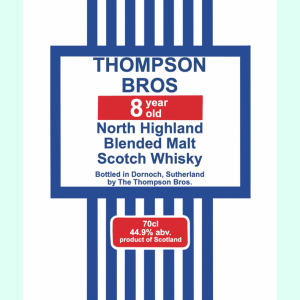
The Thompson Brothers launched their value whisky with a label paying homage to Tesco’ budget own-label range fully expecting a cease and desist letter to follow. When none appeared they discovered that the trademark for the logo had lapsed. It’s now theirs. The newest batch is an eight year old vatting of two distilleries from the North Highlands [review below].
It’s now been joined in by Port of Leith’s Table Whisky. For Port of Leith’s Paddy Fletcher, ’a good bottle of table wine will be very affordable and easy to drink. You don’t have to think hard about ordering it, it’s the least intimidating thing in the world and while you don’t expect the world from it more often than not, it surprises you. It’s delicious and you feel happy about drinking delicious wine for a reasonable price. We wanted to create a whisky that achieved all of that.’
It’s a (belated) follow up to an idea which came, as so many others, from the John Glaser era of Compass Box when he created Whisky de Table for La Maison du Whisky. On element of Glaser’s approach was also an inspiration for Phil Thompson, namely ‘if you throw enough Clynelish at anything it will be great…
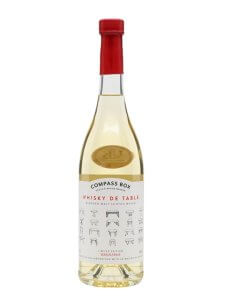
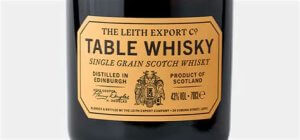
‘On a serious note, we wanted to present something which was local to us – our team could back and we could reproduce fairly regularly at a fair price. Thankfully, Mike Kydd at Diageo backed us with Ord and Clynelish.’
These whiskies are more than just canny marketing. They are a reaction against the trend of ever higher prices, they aim to prove the point that great whisky can be delivered at an affordable price. ‘Even during the silly times, we did our best to offer value,’ says Phil. ‘All we are doing is passing on the pricing to our consumers, ensuring importers and retailers maintain a fair margin along the way.’
For Port of Leith it was a matter of waiting for the right liquid to come along. ‘‘The concept was in our minds for several years,’ says Paddy. ‘One day we tasted some grain whisky that had been put into decent casks and we both said to each other – this is Table Whisky! It wasn’t a strategic decision to fulfil a market need, and yet our timing seemed to be pretty good as consumers were looking for something more affordable to enjoy.’
What though is value? Is it as simple as delivering greater quality and satisfaction than the price?
‘For us it’s always been led by the liquid quality, ‘ says Phil. ‘Also, how accessible the product is to a normal consumer on a normal salary with a general/casual interest in whisky.
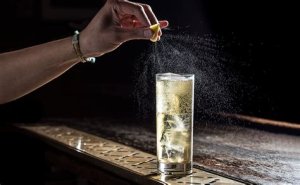
‘I feel the more expensive a whisky becomes, the more you alienate your core audience. You see this now with some of the larger distillers. They forgot that ultimately they need to sell 12-year-old whisky to daily drinkers!
‘When we first got into whisky, a normal working person could have an interest in closed distilleries, build a collection, and afford to open bottles without ‘the fear.’ Once upon a time, these whiskies were accessible! We want whoever our consumer is to always sit up and take notice when they taste our whiskies, but also to feel that is fair value.’
What does it say about whisky today that we’re even talking about this? For Phil, it’s a growing disconnect between the industry and a new generation of drinkers. ‘There’s a prevailing narrative that premiumisation has dominated for too long and consumers have had enough of it,’ he argues.
‘There’s certainly evidence that consumers aren’t prepared to spend as much as they have in previous years,’ says Paddy. There’s a lot of financial pressure out there. If our older, more experienced customers are feeling the strain, it will be even harder for younger consumers who are critical for the future of the category.
‘Great whiskies must remain within the reach of us mere mortals if we’re to remain in love with it. Otherwise, the customer will just feel left behind and look elsewhere. That’s what has happened with Bordeaux wine. We mustn’t make that mistake with Scotch. Affordable, quality whisky is essential for new generations to discover how amazing it is and join the category.‘

It’s not just as simple as deep discounting which was the mistake made by blends in the ‘90s. In an attempt to gain market share prices were slashed. It only ended up commoditising the market. Whisky was now just a cheap drink and there was no margin left to support the brands. A close look at today’s market and you can see the same happening. How then to keep margin but also generate value?
An established brand cutting its price raises questions in consumers’ minds. Why is it now cheaper? Has the quality dropped as well? Were we always being overcharged?
A new whisky coming in at ‘value’ price (with margin, story, quality etc) carries none of that baggage. Instead, it’s a refreshing alternative.
These two bottles are not alone. There is value to been had. More shall be sought out and tried.
On My Shelf
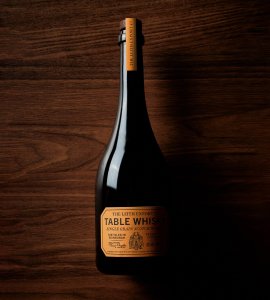 Table Whisky, Leith Export Co., (43%/£35)
Table Whisky, Leith Export Co., (43%/£35)
A North British grain aged in new oak and ex-sherry, this has the piney sauna-like scent you get from virgin casks. There’s also melting Mars bar, dried fruits and sweet spices.
In the mouth, it starts gently with a mix of brown butter, along with a double scoop of salted caramel and rum and raisin ice cream. The feel remains as soft as you’d expect from a grain, but North British is weighty, so it can flex against the oak which starts to try and grip in the middle of the tongue. There’s more cask on show now: burnt toffee and an almost phenolic touch before it calms down and finishes with a mix of chocolate and ginger. Adding water is a good idea as it brings out the sweetness of the sherry cask along with more layers of rd fruit and citrus.
As Highball (just soda) OO… spicy! A pretty serious, yet refreshing drink. There’s a little liquorice thing going on, dates too and that polished oakiness. A wee lemon slice work wonders. Ginger ale an even better bet.
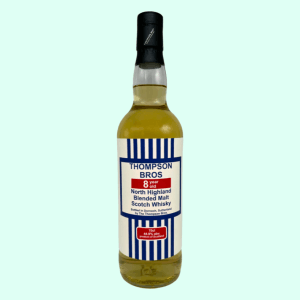 8yo North Highland Blended Malt, Thompson Bros., (42.9%/£30.83)
8yo North Highland Blended Malt, Thompson Bros., (42.9%/£30.83)
This sits on the bright, fragrant side of thing: green grass, freesia, then some white peach, tinned pineapple, kumquat, ginger syrup, and clean lino.
The palate is soft and slightly oily to start with, but soon starts to prickle on the sides of the mouth as a mix of citrus and spice kicks in. Its sits in the middle nicely allowing some pink marshmallow and sherbet dabs to come out before a boisterous mix of Scotch Bonnet heat and fruit develops. It’s itching for lengthening.
Water makes everything more relaxed. Now there’s Starburst sweets, lime, sweet melon, more of the cut grass and a palate which is gentle, and mouthfilling, where the chili heat has changed to a background mineral kick.
As Highball (just soda): Utterly delicious. The mineral element adds a dry under note to the summery fruits. Lovely citrus/peach skin thing at the end. Dangerously moreish and fits GenZ lower alcohol requirements.
————————————
In My Cupboard
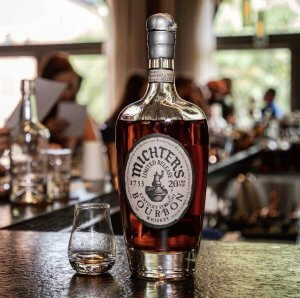
Michter’s 20yo (57.1%/£2,599)
It kicks off with cherry pipe tobacco, a hefty drive of allspice, clove, dried dill, some sarsaparilla/root beer. The cherries are now maraschino, and there’s also some umeshu and, in time, damask rose and dried cranberry. It’s weighty, but supple with good complexity and a space-filling aroma that moves into bouquet garni, dried orange peel.
On the palate, the weight of distillate and, yes, fruit, hold the alcohol and wood at bay. It’s also spicier than the nose might suggest. There’s purple fruits, and those cherries re-emerge once more, this time with added menthol. Yes, it’s Cherry Tunes!
Some roasted nut, and a whiff of leather leads into amaro’s vegetal, rooty bittersweet depths. Though sweet on the tip of the tongue, it tightens towards the middle, but just as it seem as if it’s going to become constricted there’s a surge of rye spices which break through – long pepper, clove, five spice and the fruits released.
I don’t usually add water to old Bourbons as I find it brings out the wood tannins, but this is an exception. There’s more aromatics, some raspberry leaf, myrrh and on the palate candy floss and red fruits. For a whisky that’s spent 20 years in new oak the balance is excellent. Value?
—————–

In My Ears
I can’t promise you’ll be able to replicate the the same reaction without having th band in front of you and a 2011 Lagavulin Jazz in hand, but pour yourself something and have this at full blast. All hail to the mighty Mogwai!